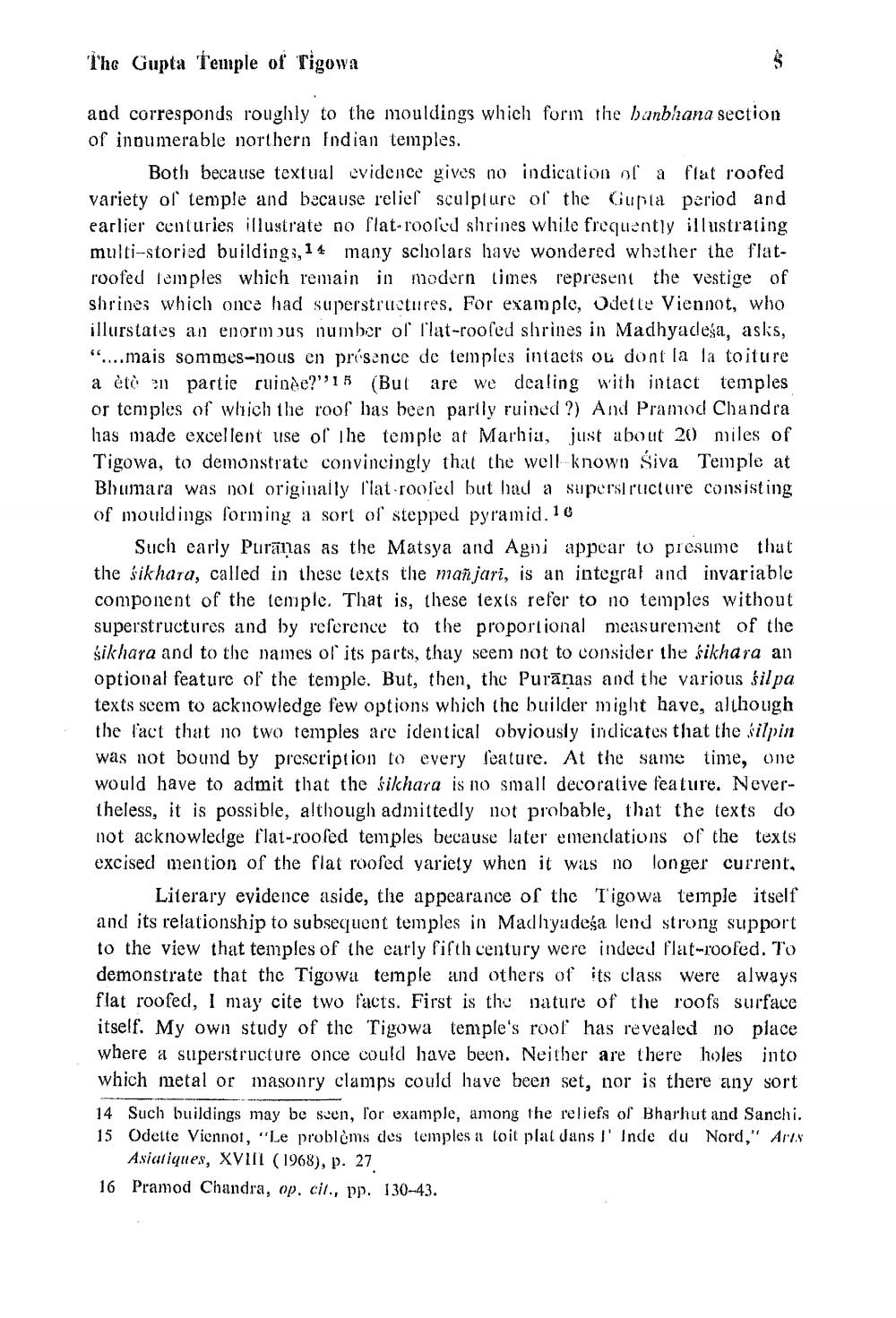Book Title: Sambodhi 1977 Vol 06 Author(s): Dalsukh Malvania, H C Bhayani, Nagin J Shah Publisher: L D Indology Ahmedabad View full book textPage 6
________________ $ The Gupta Temple of Tigowa and corresponds roughly to the mouldings which form the banbhana section of innumerable northern Indian temples. Both because textual evidence gives no indication of a flat roofed variety of temple and because relief sculpture of the Gupta period and earlier centuries illustrate no flat-roofed shrines while frequently illustrating multi-storied buildings, 14 many scholars have wondered whether the flatroofed temples which remain in modern times represent the vestige of shrines which once had superstructures. For example, Odette Viennot, who illurstates an enormous number of flat-roofed shrines in Madhyadega, asks, "....mais sommes-nous en présence de temples intacts ou dont la la toiture a ètè en partie ruinée?"15 (But are we dealing with intact temples or temples of which the roof has been partly ruined ?) And Pramod Chandra has made excellent use of the temple at Marhia, just about 20 miles of Tigowa, to demonstrate convincingly that the well-known Siva Temple at Bhumara was not originally flat-roofed but had a superstructure consisting of mouldings forming a sort of stepped pyramid. 10 Such early Puranas as the Matsya and Agni appear to presume that the sikhara, called in these texts the mañjari, is an integral and invariable component of the temple. That is, these texts refer to no temples without superstructures and by reference to the proportional measurement of the sikhara and to the names of its parts, thay seem not to consider the sikhara an optional feature of the temple. But, then, the Puranas and the various silpa texts seem to acknowledge few options which the builder might have, although the fact that no two temples are identical obviously indicates that the silpin was not bound by prescription to every feature. At the same time, one would have to admit that the sikhara is no small decorative feature. Nevertheless, it is possible, although admittedly not probable, that the texts do not acknowledge flat-roofed temples because later emendations of the texts excised mention of the flat roofed variety when it was no longer current, Literary evidence aside, the appearance of the Tigowa temple itself and its relationship to subsequent temples in Madhyadeśa lend strong support to the view that temples of the early fifth century were indeed flat-roofed. To demonstrate that the Tigowa temple and others of its class were always flat roofed, I may cite two facts. First is the nature of the roofs surface itself. My own study of the Tigowa temple's roof has revealed no place where a superstructure once could have been. Neither are there holes into which metal or masonry clamps could have been set, nor is there any sort 14 Such buildings may be seen, for example, among the reliefs of Bharhut and Sanchi. 15 Odette Viennot, "Le problèms des temples a toit plat dans l'Inde du Nord," Arts Asiatiques, XVIII (1968), p. 27 16 Pramod Chandra, op. cit., pp. 130-43.Page Navigation
1 ... 4 5 6 7 8 9 10 11 12 13 14 15 16 17 18 19 20 21 22 23 24 25 26 27 28 29 30 31 32 33 34 35 36 37 38 39 40 41 42 43 44 45 46 47 48 49 50 51 52 53 54 55 56 57 58 59 60 61 62 ... 420
